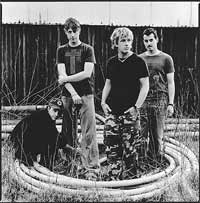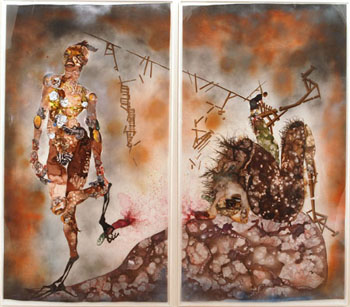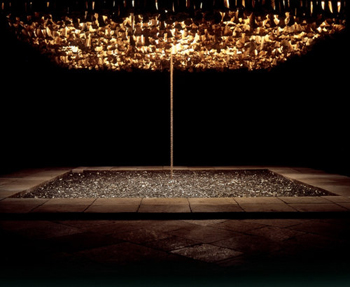12 Memories from Travis proved to be one of the favourite album releases this year amongst reviewers.
The Sunday Times hailed it as “bloody brilliant…A Triumph.” Time Out boasted it as being “sonically eloquent and emotionally resonant…there’s much here to admire.”
And now, the second track is due for release.
“Don’t just stand there watching it happening / I can’t stand it / Don’t feel it….” The Beautiful Occupation.
Every period of social upheaval gives birth to songs of discontent. Some songs are crafted specifically as rallying cries to garner support for a cause or to broadcast a grievance. Travis’s new single, The Beautiful Occupation, is just such a song.
Written by Fran Healy as war with Iraq was becoming a real possibility and the crisis in the Middle East was escalating, The Beautiful Occupation addresses Fran’s frustrations and concerns with the turbulent times in which we’re living. As he recalls. “September 11 was the start of something. I can see how fragile the world is”.
Effectively a peace anthem for modern times, an acoustic version of the song originally appeared on Warchild’s Hope album earlier this year prior to being included on the band’s new album, 12 Memories, released in October.
The last year has been a period of reflection for Travis, as evident from the songs on 12 Memories their most poignant and effecting work to date. The enforced break following Neil Primrose’s accident gave Travis both an opportunity to re-group and to reflect on the times in which we live. The resulting songs explore lyrically darker themes, a reaction to today’s unstable social and political climate.
(from contactmusic.com)
LYRICS
Don’t just stand there watching it happening
I can’t stand it
Don’t feel it
Something’s telling me
Don’t wanna go out this way
But have a nice day
Then read it in the headlines
Watch it on the TV
Put it in the background
Stick it in the back
Stick it in the back
For the beautiful occupation
The beautiful occupation
You don’t need an invitation
To drop in upon a nation
I’m too cynical
I’m just sitting here
I’m just wasting my time
Half a million civillians gonna die today
But look the wrong way
Then read it in the headlines
Watch it on the TV
Put it in the background
Stick it in the back
Stick it in the back
For the beautiful occupation
The beautiful occupation
You don’t need an invitation
To drop in upon a nation
Don’t just stand there watching it happening
I can’t stand it
Don’t feel it
Something telling me
Don’t wanna go out this way
But have a nice day
Then read it in the headlines
Watch it on the TV
Put it in the background
Stick in the back
Stick in the back
For the beautiful occupation
The beautiful occupation
Don’t need an invitation
To drop in upon a nation
The beautiful occupation
The beautiful occupation
So much for an intervention
Don’t call the united nations











